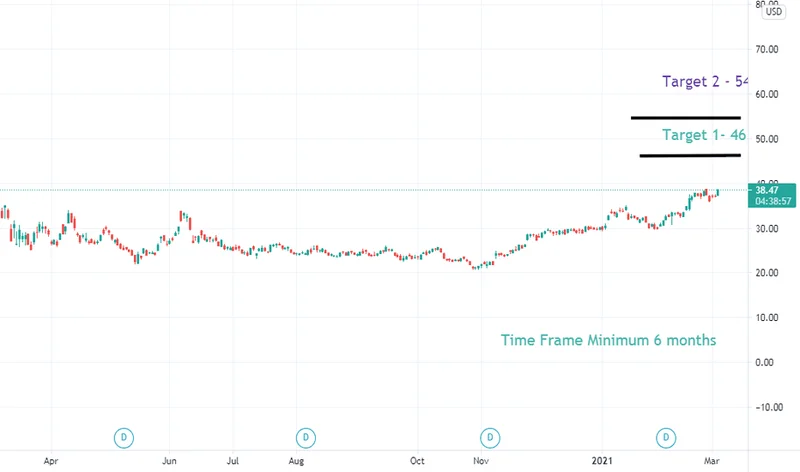Wells Fargo (WFC) Stock is Soaring: Why It's Happening and What It Signals for the Future of Finance
When a giant wakes, the ground shakes. And on Tuesday morning, the financial world felt a tremor run through its foundations as Wells Fargo—a titan often dismissed as a relic of a bygone era—didn't just wake up, it leaped to its feet. The 6.4% surge in its stock wasn't just a number on a screen; it was a signal, a bio-electric pulse from a creature many assumed was too big and too wounded to move with such speed.
Just three months ago, the narrative was entirely different. I remember the mood then—the collective sigh of analysts as the bank slashed its guidance for net interest income. The stock took a 6.1% nosedive, its largest of the year. The story was written: the old giant was finally succumbing to the pressures of a new economic climate. The supertanker was taking on water.
When I saw the Q3 numbers flash across my screen Tuesday morning, I honestly just sat back in my chair, speechless. Revenue of $21.44 billion, earnings per share of $1.66—both decisively crushing expectations. It felt less like a bank report and more like a comeback story written in the cold, hard language of mathematics. This wasn't just a beat; it was a defiance of the narrative. How does a system this vast, this scrutinized, pull off a reversal so complete? What hidden machinery whirred to life inside this financial behemoth?
The Ghost in the Balance Sheet
To understand what happened, you have to look past the headline numbers and see the ghost in the balance sheet. The most fascinating part of this story isn't the victory, but the context of the battle. The world was watching one thing: Net Interest Income. That’s the core profit a bank makes from lending—in simpler terms, it's the bread and butter of traditional banking. And on that front, Wells Fargo actually had a slight miss.
This is the critical detail everyone seems to be glossing over. They didn't just fix the one problem everyone was staring at. They made that problem almost irrelevant.
Think of it like this: Imagine a massive, city-sized factory whose main power conduit is failing. Everyone expects a blackout, a total system shutdown. But instead, the lights in the city suddenly burn brighter than ever. How? Because deep within the system, countless smaller, independent generators kicked in, re-routing power, optimizing flow, and opening up new energy sources no one on the outside even knew existed. This is the real story here, the idea that a system this vast can re-route its own internal pathways to find new sources of value when its primary fuel line is squeezed—it’s a stunning display of organizational intelligence that goes far beyond a single CEO's decision or a clever new product.

This isn't just about banking; it's a lesson in institutional adaptation. We're seeing a legacy institution behave less like a rigid hierarchy and more like a complex, adaptive organism. It sensed a threat, and its immune system didn't just fight back; it evolved. The market's positive reaction, a rare 5%+ jump for a stock this stable, tells you that investors didn't just see a good quarter. They saw evidence of life. They saw a system that could learn.
A New Corporate Biology
For years, we’ve talked about "disruption," usually framing it as small, agile startups outmaneuvering corporate dinosaurs. We saw companies like Blockbuster fall to Netflix, or taxi medallions become worthless in the face of Uber. The story was always the same: the big are slow, the small are fast.
But what if that’s an oversimplification? What if the giants are learning to dance?
The Wells Fargo Q3 result is a powerful counter-narrative. It suggests that size, when combined with immense data and sophisticated internal systems, can create a form of resilience that startups can only dream of. That $1,000 you might have invested five years ago is worth over $3,600 today, not because the bank avoided trouble, but because it navigated through it. This isn't the agility of a speedboat; it's the sheer, unstoppable momentum of an aircraft carrier that has learned to repair its own engines while at sea, in the middle of a storm.
This, of course, brings with it a profound responsibility. A system this powerful and adaptive must be guided by an equally powerful ethical compass. Its ability to optimize for profit must be tethered to a deeper mission of serving its customers and communities. The same internal machinery that can generate unexpected revenue can, if misdirected, cause immense harm. That’s the tightrope these modern titans must walk.
But the potential here is breathtaking. What happens when our other legacy institutions—in healthcare, in manufacturing, in logistics—begin to exhibit this same adaptive intelligence? Can we build hospitals that re-route patient care in real-time during a crisis? Or supply chains that can heal themselves after a natural disaster? This is bigger than one bank's stock price. We may be witnessing the birth of a new kind of corporate biology.
The System That Learned to Heal
Ultimately, the numbers from Tuesday morning are more than just a financial report; they are a blueprint. They show us that resilience isn't about avoiding failure, but about building systems that can absorb shocks, learn from them, and emerge stronger. In a world defined by volatility and uncertainty, this might be the single most valuable trait an organization can possess. Wells Fargo didn't just post a profit. It offered a glimpse of an institution that is learning to think, adapt, and survive. And that’s a story with implications that stretch far beyond Wall Street.
Tags: wfc stock
Polaris Acquires Indian Motorcycle: The Financials and the Future of the Brand
Next PostCRML Stock Jumps on China Tensions: what's really happening and if it's all just hype
Related Articles
